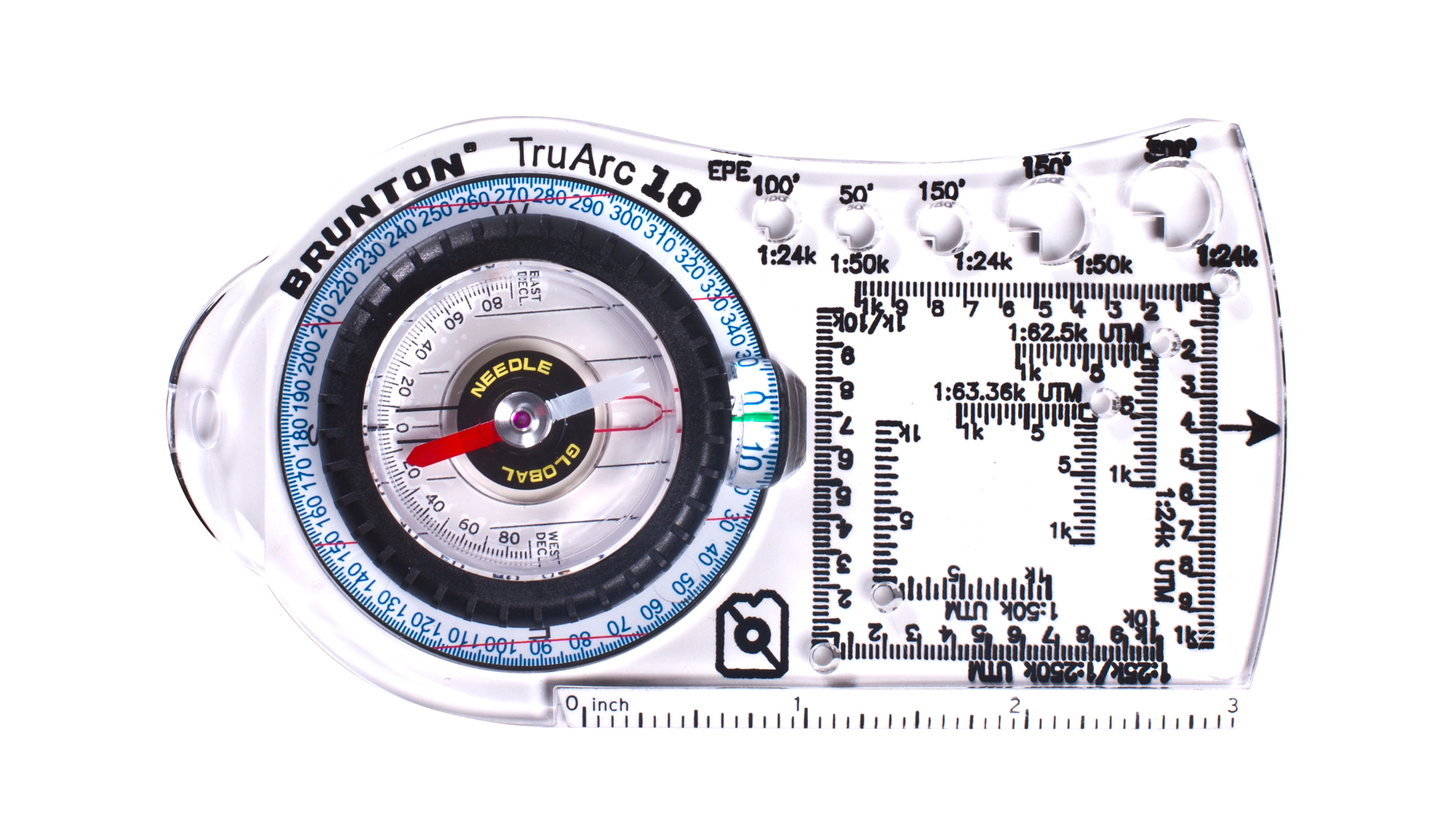Advnture Verdict
Functional and precise in both the northern and southern hemispheres, the Brunton TruArc is a great compass for both international adventure travelers and those who explore close to home.
Pros
- +
Needle tilts to 20° for accurate use anywhere in the world
- +
Tool-free declination
Cons
- -
Compass can pop out of its baseplate and is hard to reinstall
You can trust Advnture
Brunton TruArc 10 compass: first impressions
GPS is an amazing tool. But the Brunton TruArc 10 is just as amazing and more reliable. GPS signals can be lost in remote locations, whereas a compass is always at the ready. This one is an excellent option for adventurers who travel to both the northern and southern hemispheres, as it can be calibrated for either (see also: types of compass).
The Brunton TruArc 10 – which features in our best compass buying guide – saves time and reduces error with tool-free declination adjustment that allows the needle of your compass to point to magnetic north while the bearing on your compass bezel is offset. The degree reading off the bezel factors in declination, so you don’t have to do the math. The TruArc 10 has one-degree azimuth ring markings – something that’s rare in compasses in this price range. It also has a magnifying glass over the bezel to make the bezel marks easier to read (see also: how to read a map and how to use a compass).
• RRP: $50 (US) / £50 (UK)
• Weight: 48g / 1.7oz
• Dimensions: 132 x 71 x 13mm / 5.2 x 2.8 x 0.5in 5 x 2.4in
• Scales: 1:24k, , 1:50k, 1:62.5k
Brunton TruArc 10 compass: in the field
When working on mapping a new trail network, I was able to find my way to a mountain saddle even though I was moving through craggy terrain by taking bearings with this compass, and the magnifying lens made it easy to see the exact bearing.
The bezel rotates smoothly, but when I took a bearing and then stashed the compass in a packet, it stayed put. If I used this compass in conjunction with a handheld GPS in an area that I knew would have breaks in the service, Romer scales on the baseplate would help me determine my exact coordinates without having to do the math.
On the downside, the compass did pop out of its baseplate and proved pretty hard to reinstall, which was a little annoying.
All the latest inspiration, tips and guides to help you plan your next Advnture!
Vermont-based writer, photographer and adventurer, Berne reports on hiking, biking, skiing, overlanding, travel, climbing and kayaking for category-leading publications in the U.S., Europe and beyond. In the field, she’s been asked to deliver a herd of llamas to a Bolivian mountaintop corral, had first fat-biking descents in Alaska, helped establish East Greenland’s first sport climbing and biked the length of Jordan. She’s worked to help brands clean up their materials and manufacturing, and has had guns pulled on her in at least three continents.


